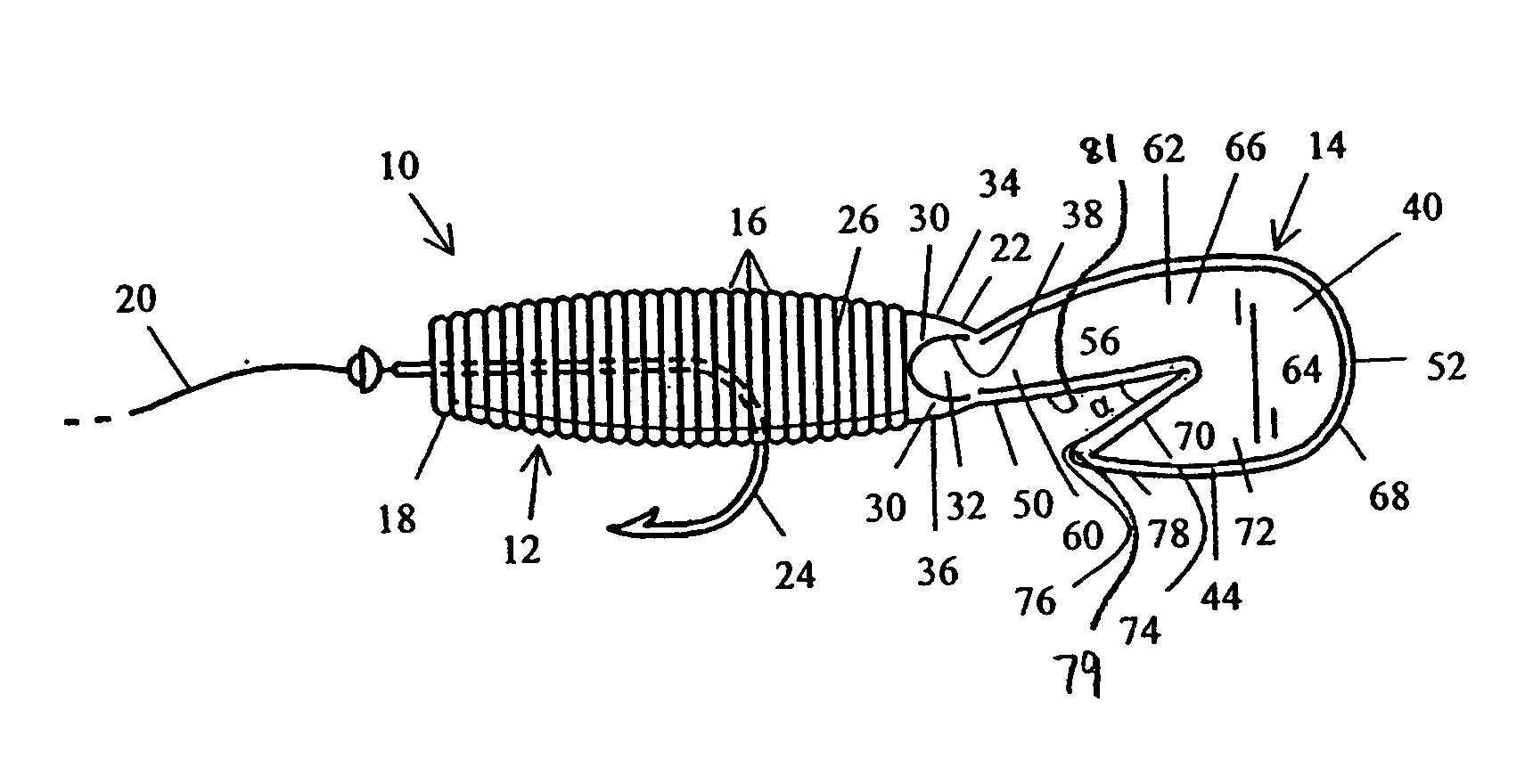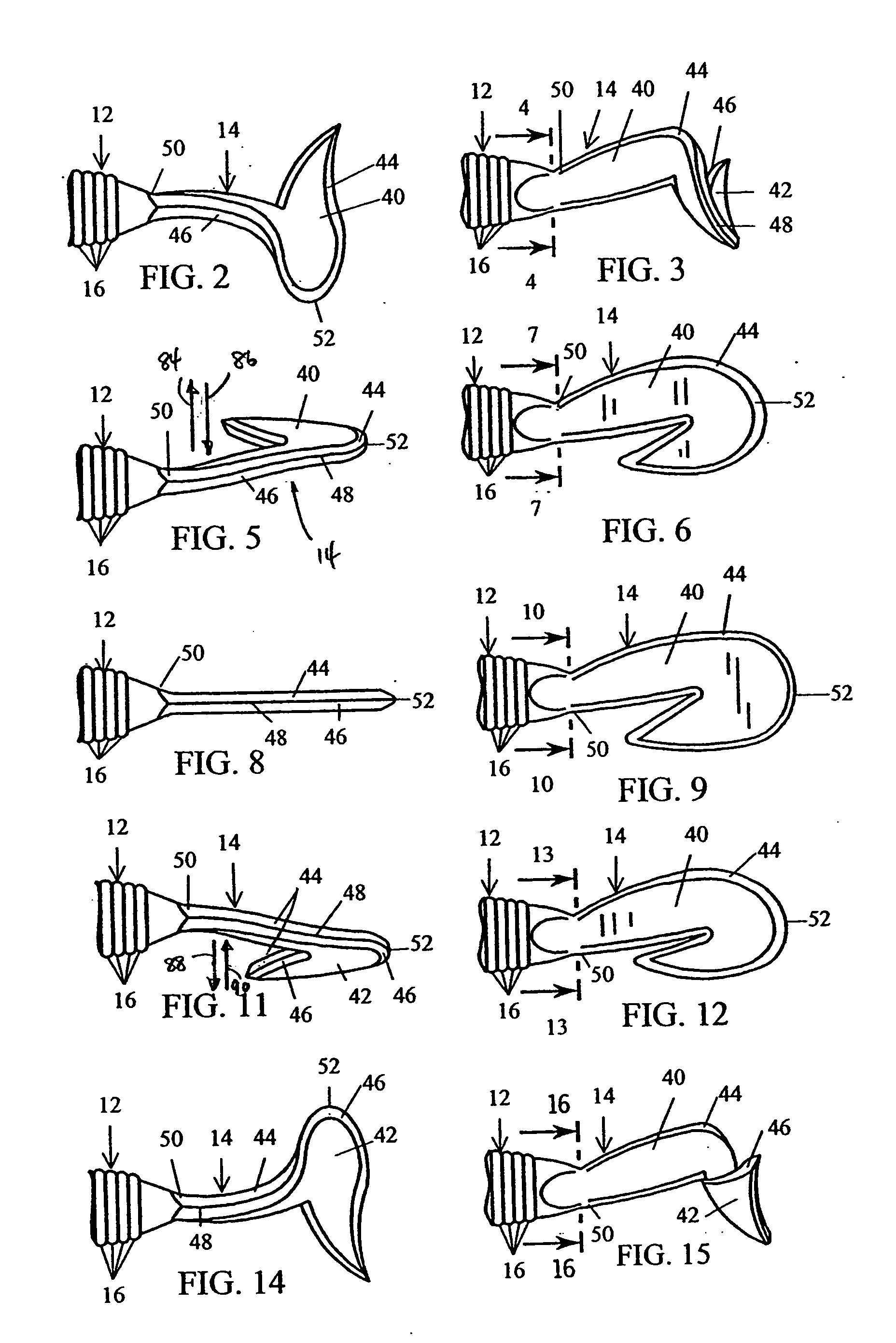Tail configuration for an artificial fishing lure
a technology of artificial tails and lures, applied in the field of artificial tails, can solve the problems of unnatural movement of lures, lack of desired strong movement, and relatively limp tail types, and achieve the effect of strong action
- Summary
- Abstract
- Description
- Claims
- Application Information
AI Technical Summary
Benefits of technology
Problems solved by technology
Method used
Image
Examples
Embodiment Construction
[0026] A first preferred embodiment of a fishing lure 10 includes a body 12 and a body extension member in the form of a tail 14, as is shown in FIG. 1. For the sake of reference only, the fishing lure 10 and its various parts will be described as having a front end and a rear end. The front end is the end of the fishing lure that is typically attached to a fishing line. In the illustrated embodiment, the body 12 has a shape generally resembling that of a grub, and includes ribs 16 that extend around the body 12 along its length. The body 12 defines a front end 18, at which a fishing line 20 can be connected via a hook 24, in a manner as is known, and a rear end 22 from which the tail 14 extends. The body 12 is dimensioned and configured such that a fishing hook 24 can be inserted into the front end 14 of the body 12 and out of a side of the body 12. In the illustrated embodiment, the body 12 has a generally cylindrical shape, and the front and rear ends 18 and 22 are tapered. The b...
PUM
 Login to View More
Login to View More Abstract
Description
Claims
Application Information
 Login to View More
Login to View More - R&D
- Intellectual Property
- Life Sciences
- Materials
- Tech Scout
- Unparalleled Data Quality
- Higher Quality Content
- 60% Fewer Hallucinations
Browse by: Latest US Patents, China's latest patents, Technical Efficacy Thesaurus, Application Domain, Technology Topic, Popular Technical Reports.
© 2025 PatSnap. All rights reserved.Legal|Privacy policy|Modern Slavery Act Transparency Statement|Sitemap|About US| Contact US: help@patsnap.com



